Editor’s note: Travis Kalanick stepped down from Uber on June 21, 2017. This is how he shaped it into a multibillion-dollar company.
“What if we could just push a button and a car would come?”
—Washingtonian, Jan. 2012
Travis Kalanick did not want to be the CEO of Uber.
When the company officially launched in May 2010, he was reluctant to throw himself into the heat of battle. Not because he was afraid. But because he was wary of the commitment.
He had been through two grueling startups in nine years. And, as he admits, the idea for the enterprise—as it was first floated to him by his friend Garrett Camp—wasn’t all that enticing to Kalanick.
I don’t want to run a limo company, Kalanick thought.
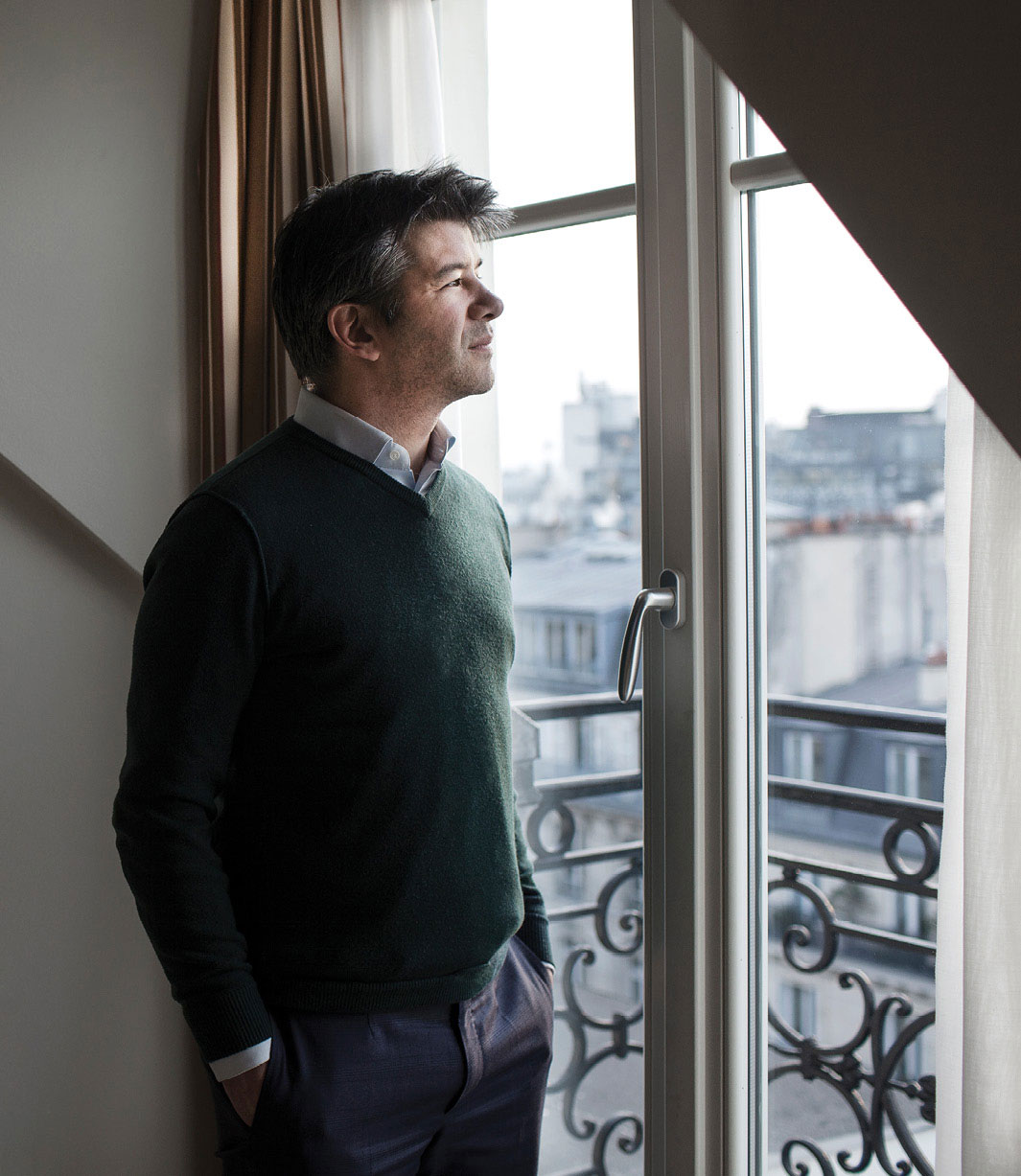
©SIMONE PEROLAR/LUZ/REDUX
He agreed to invest in the idea, though. And, with Camp’s blessing, Kalanick found someone else to oversee the day-to-day operation. And so, Ryan Graves, a former database administrator at General Electric Healthcare, became Uber’s first CEO. And Kalanick worked beside him for 15 to 20 hours a week, quietly molding the company’s business strategy as Camp’s co-founder and “chief incubator.”
“We both thought the business was going to be pretty low-tech, mostly operational,” Kalanick wrote in a blog post. “Little did we know ;)”
It’s hard to say exactly what happened to alter Kalanick’s thinking, but in the seven months after the launch, he decided to take command.
With Graves at his side as a senior vice president, Kalanick boldly pushed the company’s car service forward—despite heated opposition from the taxi industry and government regulators—into more than 500 cities worldwide, funding the expansion with a multibillion-dollar war chest supplied by a host of high-powered investors, including Benchmark Capital, Jeff Bezos and Google Ventures.
Today Uber is valued at nearly $70 billion.
Related: The Uber Episode
The company hasn’t shared many details about those early days. Kalanick tends to be wary of the press, declining most requests for interviews, but he routinely speaks at tech conferences and business school forums, and many of those talks are archived on the web. If you listen to them closely, patterns emerge, statements and anecdotes that reveal his thoughts.
His fierce resolve has been documented in countless stories. The one he mentions time and again involves a $250 billion lawsuit that crushed the company he dropped out of college to build. He was 23 at the time, working with a group of University of California-Los Angeles friends in a cramped off-campus apartment to create an internet search engine called Scour that allowed users to swap music, movies and video clips.
This was before Napster. In fact, Napster co-founder Shawn Fanning was an early fan.
The technology held enough promise to attract a $4 million investment from Hollywood agent Michael Ovitz and supermarket magnate Ron Burkle. Before the deal was complete, Ovitz himself sued Kalanick and his pals to prevent them from pitching the idea to other investors. Ovitz and Burkle eventually secured 51 percent of the company.
In the end, it did not matter. Scour’s search engine proved to be so popular among music and movie fans that it provoked the ire of the entertainment industry. A host of litigants, 33 in all—including the Motion Picture Association of America, the Recording Industry Association of America and the National Music Publishers Association—filed suit in a U.S. District Court of New York, demanding $150,000 for each reported incident of copyright infringement.
The Scour team had to declare Chapter 11 bankruptcy.
For most people, a hardball experience such as that would frighten them from the world of business forever. But Kalanick returned a month later with a new company called Red Swoosh, built around an idea that would ultimately succeed, but only after years of toil and turmoil.
And therefore, when at last he agreed to take the reins at Uber, he was a skilled field general. On the day the board of directors approved his appointment to CEO, the company, which was then known as UberCab, received a cease-and-desist letter from the San Francisco Municipal Transportation Agency, accusing it of running a cab service without a permit. Kalanick’s response? He trimmed the name to Uber and kept the wheels rolling.
“Go against the grain, be resilient, even if everyone thinks you are crazy.”
—Startup India, Jan. 2016
From the start, he viewed himself as an outsider, the classic underdog. Born in Los Angeles on August 6, 1976, Kalanick was raised in the working-class neighborhood of Northridge. His father was a civil engineer for the city. His mother worked in the ad sales department at the Los Angeles Daily News. Their son was a straight-A student. The kind of kid who learned to code in the mid-80s on a Commodore 64.
Kalanick likes to pepper his speech with references to the champion’s mindset, the importance of leaving every ounce of effort on the field, but he did not get to experience that glory firsthand. At Granada Hills High, the role of quarterback was reserved for the likes of John Elway, who had attended in the late ’70s.
Kalanick instead ran cross country. He also anchored the 4-x-400-meter relay team and competed in the long jump. One summer, he sold $20,000 worth of Cutco knives.
At 18, he started an SAT prep service with the father of a classmate. They called it New Way Academy. A year earlier, Kalanick had scored a 1580 on the test, acing all but two questions in the verbal section. So he took it upon himself to coach the most gifted students, the ones who most closely resembled him in ambition.
He could have gone to Stanford University—like Elway and so many other future tech titans—but he opted for UCLA, where he joined a club called the Computer Science Undergraduate Association. That’s where he met Michael Todd, who with classmate Vince Busam was working on a peer-to-peer search engine that would soon attract millions of users and prompt Kalanick to leave school in the midst of his senior year.
Although a computer engineer by training, Kalanick handled the marketing and business development for the fledgling firm. He spent long hours working the phones in a futile effort to drum up support after the $250 billion lawsuit wiped out Scour’s prospects. When the enterprise finally failed, he slept 14 hours a night to recover from the strain.
In an out-of-court settlement, the Scour team agreed to pay $1 million in damages and shut down the technology. The whole company was carved up and sold off in 20 minutes.
For Kalanick, the sting of that defeat would linger for years.
“Go after the hard things. Because it’s there you’ll create lasting value, enduring value, magic that can be sustained.”
—MIT, Dec. 2015
Kalanick loves problem-solving. Creative problem-solving. “Everything I do in business goes back to that core problem-solving rigor I got exposed to in the engineering curriculum [at UCLA],” he told a campus news site in 2015.
He enjoys crunching the data Uber’s mobile app gathers, and considers himself Rain Man-like in his powers, but—despite the strength of his left brain—he has a philosophical side, too. In the 18 months after he sold Red Swoosh, he bought a three-bedroom house in San Francisco for $1 million and threw open the doors to a free-flowing discussion of ideas. He dubbed it the Jam-Pad.
Visitors arrived at all hours of the day and night to play video games, drink beer, eat meals prepared by Kalanick’s in-house chef, and toss around concepts. It was not uncommon to find a young CEO such as Box’s Aaron Levie sacked out in the guest bedroom come morning.
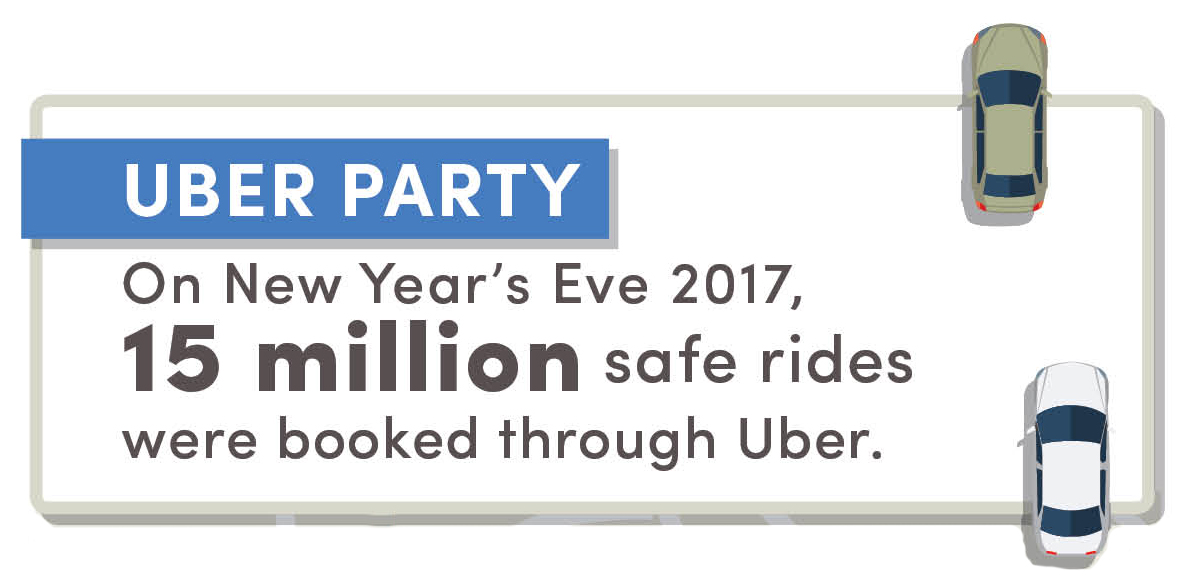
At times, Kalanick can be blunt with his opinions. He once dismissed an idea presented by Jordan Kretchmer, CEO of Livefyre (now part of Adobe), as “small-time.” But when Kretchmer hit on the idea for Livefyre’s social media software, Kalanick was generous with support. He not only introduced Kretchmer to dozens of investors, he backed him with his own money.
Kalanick brings that same curiosity and vigor to Uber, where he calls himself “problem solver-in-chief.” Thanks to his fertile imagination, the company has become far more than a limo service. It’s now a tech giant capable of tackling massive logistics problems such as FedEx or Amazon. It does not own cars, does not employ drivers, but it can deliver timely rides to passengers in 540 cities worldwide, regardless of the weather, the time of day, or the myriad ordinances that govern such transit.
The CEO has been roundly criticized for using aggressive tactics to advance Uber’s cause, but he frames those tactics in the context of the company’s mission. It’s not about being insensitive or impatient, he explained during an appearance on the Charlie Rose show. “It’s more about the really interesting problems in the world and how you lean into them and solve things that people maybe thought weren’t even possible to solve.”
“I like problems,” he added, “where you can fight for something that matters.”
Related: Think Slow and Other Tricks for Better Problem-Solving
“In your toughest times is when you learn to be your best.”
—CBS This Morning, Aug. 2012
When Scour imploded, Kalanick did not withdraw to nurse his wounds for long. He got right back to business. A month after the company folded, he launched Red Swoosh with Scour colleague Michael Todd.
Kalanick calls it a “revenge business.” The idea was to take the networking software that had powered Scour’s search engine and turn it into a tool useful to the entertainment titans who had crushed him. As he gleefully explained at Silicon Valley’s FailCon in 2011, he wanted “the dudes who sued [him]” to have to pay him for it.
The Red Swoosh concept was, as Kalanick admits, ahead of its time. On paper, it could save a company such as YouTube hundreds of millions in bandwidth costs by pulling requested videos from nearby users instead of YouTube’s own servers. But the industry leader, Akamai, had seen its stock price plummet from $328 a share to $3 after the stock market crash of 2000, which did not inspire visions of riches for venture capitalists.
For a long stretch, Kalanick insists, he just could not catch a break. Mark Cuban backed him with $1 million, then asked for the money back. Microsoft expressed interest in buying the firm, then lowballed Kalanick with a $1.2 million offer.
To make ends meet, Kalanick had to move home with his parents—into the bedroom he had occupied as a boy. He worked four years without a salary. At one point, the company owed $110,000 in unpaid withholding taxes to the IRS—a development that created a huge rift between Kalanick and Todd. The two men disagree on who was responsible for the error. Todd left the company and later went to work for Google.
“When you’re in a tough spot as an entrepreneur, you often have to do things you don’t want to do, things you wish you didn’t have to do,” Kalanick lamented at the Code Conference in Palos Verde, California, in 2014.
But, to his credit, Kalanick did not abandon the Red Swoosh idea—even when it appeared to be dead. He convinced his engineers to work without pay for months at a time. He found a family willing to invest $300,000. He moved the operation to a beach in Thailand for a couple of months to regroup and recharge.
“I got really good at negotiating from a position of weakness,” he told the FailCon crowd.
“Fear is the disease. Hustle is the antidote.”
—Startup Mixology Conference, Oct. 2010
He withstood a steady stream of letdowns for years before he finally convinced Akamai to buy Red Swoosh in a $23 million deal.
Kalanick’s confidence is now the stuff of legend. People marvel at his ability to stare down threats from lawyers, government officials, union leaders, you name it. He is routinely described in the press as gritty and pugnacious.
What is it that makes him so unflappable?
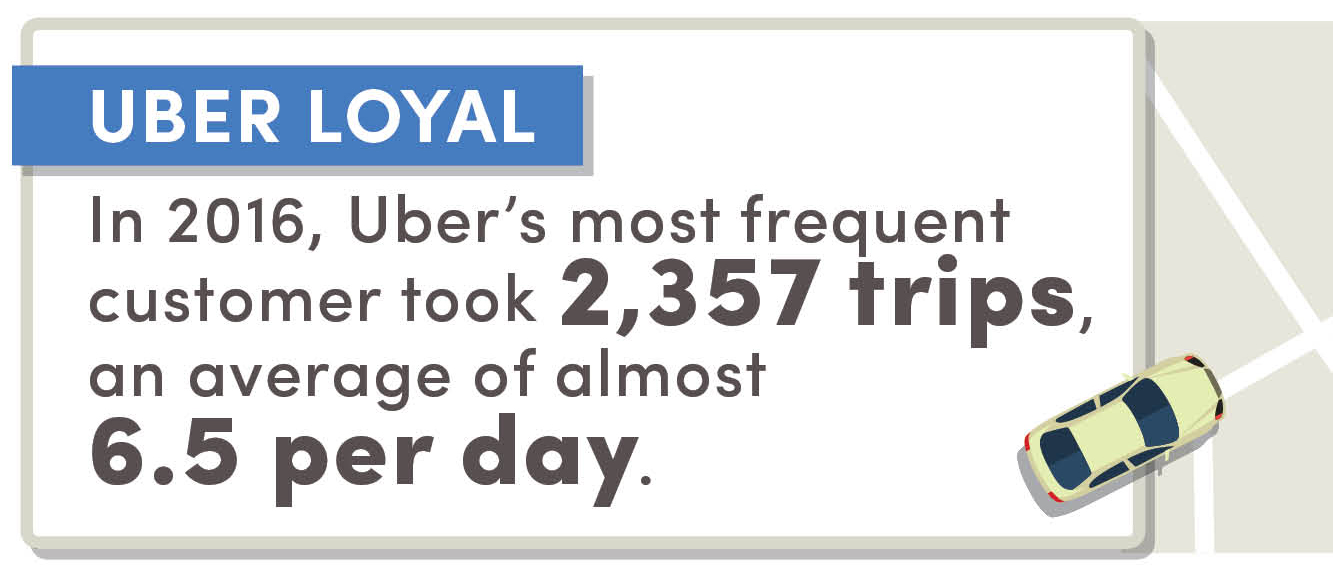
He seems to have a deep and abiding faith in his ability to work through problems. The bigger they are, the more animated he gets. This clearly has something to do with his engineering background. But it’s also tied to his belief in the champion’s mindset.
In a fireside chat in India with Ronnie Screwvala, founder of the subcontinent media conglomerate UTV, he explained it like this: “When you get on the field, put everything you have into it, put every ounce of energy you have on the field… and when you get knocked down—because if you’re an entrepreneur, inevitably you will be—when you see hard times and you get knocked down, get back up. If you keep putting everything you’ve got into it and you keep getting back up when you get knocked down, it’s almost impossible to fail.”
Related: 3 Emotions All Entrepreneurs Feel (and How to Keep Them in Check)
This is, of course, the sort of hackneyed talk you expect to find in bad sports movies. But Kalanick believes in its underlying truth. And he lets it guide his life to the extreme.
“He doesn’t sleep. He doesn’t lose focus. He will even forget to eat,” wrote Uber investor Chris Sacca in a 2015 blog post. In the story, Sacca described how Kalanick willed himself to a No. 2 ranking in the world in a video tennis game on Nintendo’s Wii console. Kalanick apparently humbled Sacca’s dad, a respectable athlete, in a match one afternoon while wielding the controller in his weak hand.
When the stakes are high, the CEO doesn’t simply unstrap his holster and mosey out to the street Clint Eastwood-style; he works every angle imaginable to make certain he has the upper hand.
To surround himself with the right team, he spends 30 to 50 hours interviewing candidates for executive jobs. He has plucked people from General Electric, Target, Google and President Obama’s campaign staff. He gives them lots of autonomy but holds them to a high standard. It’s not uncommon to find Uber employees in meetings at 9 p.m. and chat room sessions at 3 a.m.
He is a master at working the phones. One colleague described him manning the lines for hours on end while soaking in a hot tub during a Las Vegas bachelor party trip. An old girlfriend claims he remained on the phone so long during one deal he got rug burns on his feet.
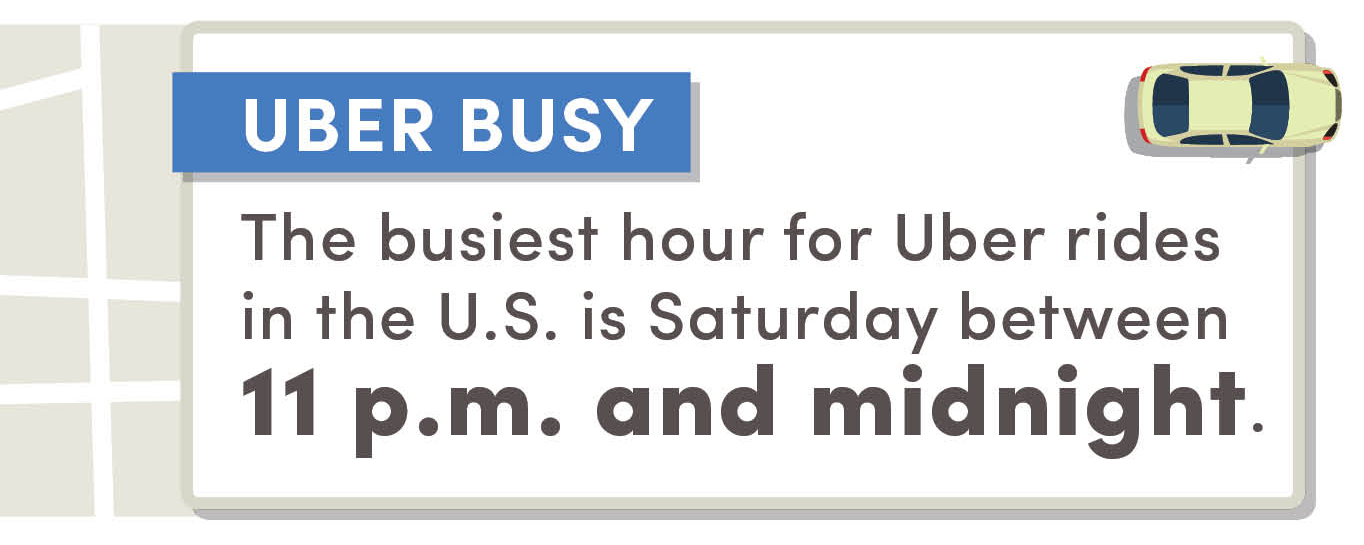
This might explain why Kalanick has lifted the art of fundraising to a whole new level. He collected $1.25 million in Uber’s first round of financing in 2010, then added $48 million more in 2011. And $258 million in 2013, and $2.6 billion in 2014, and $3.7 billion in 2015, and $4.8 billion in 2016. That last figure includes one whopping $3.5 billion check from Saudi Arabia’s Public Investment Fund.
He rarely stops moving. In meetings, he will stride around the conference table. And in an average week, he logs 40 miles on the walking track inside Uber’s headquarters. That’s how he likes to think.
Over the years, this relentless drive has taken a toll. He admits to being on the brink of a mental breakdown when the Red Swoosh deal was finally completed. He was so drained he took a year to travel and recharge.
In a heart-to-heart talk filmed at the dining room table of his childhood home, Kalanick once asked his father, Don, for words of wisdom as he prepared to enter the second half of his life. Don had earlier remarked about Travis’ tenacity as a child. “Don’t work too long or too hard,” Don said. “Take some time for yourself.”
“You can either do what they say or you can fight for what you believe.”
—Vanity Fair, Nov. 2014
For all the talk of his pugnaciousness, Kalanick speaks (in public, at least) in a quiet, measured tone, patiently fielding questions and thoughtfully explaining his vision. He seems to want to share what he has learned.
Over the years, he has taken the fairly straightforward business concept presented by Garrett Camp—a black car service for the brash young princes of Silicon Valley—and turned it into a populist movement capable of disrupting how people move around the planet.
In 2010 the company was all about transporting the privileged few. “Ballers,” Kalanick called them. Today it’s about reshaping cities, creating jobs with flexible hours and reducing carbon emissions. When people have access to rides that are reliable and safe, Kalanick argues, they don’t need to own cars. They don’t need to choke streets with traffic, communities with parking lots, the atmosphere with exhaust fumes from idling gas guzzlers.
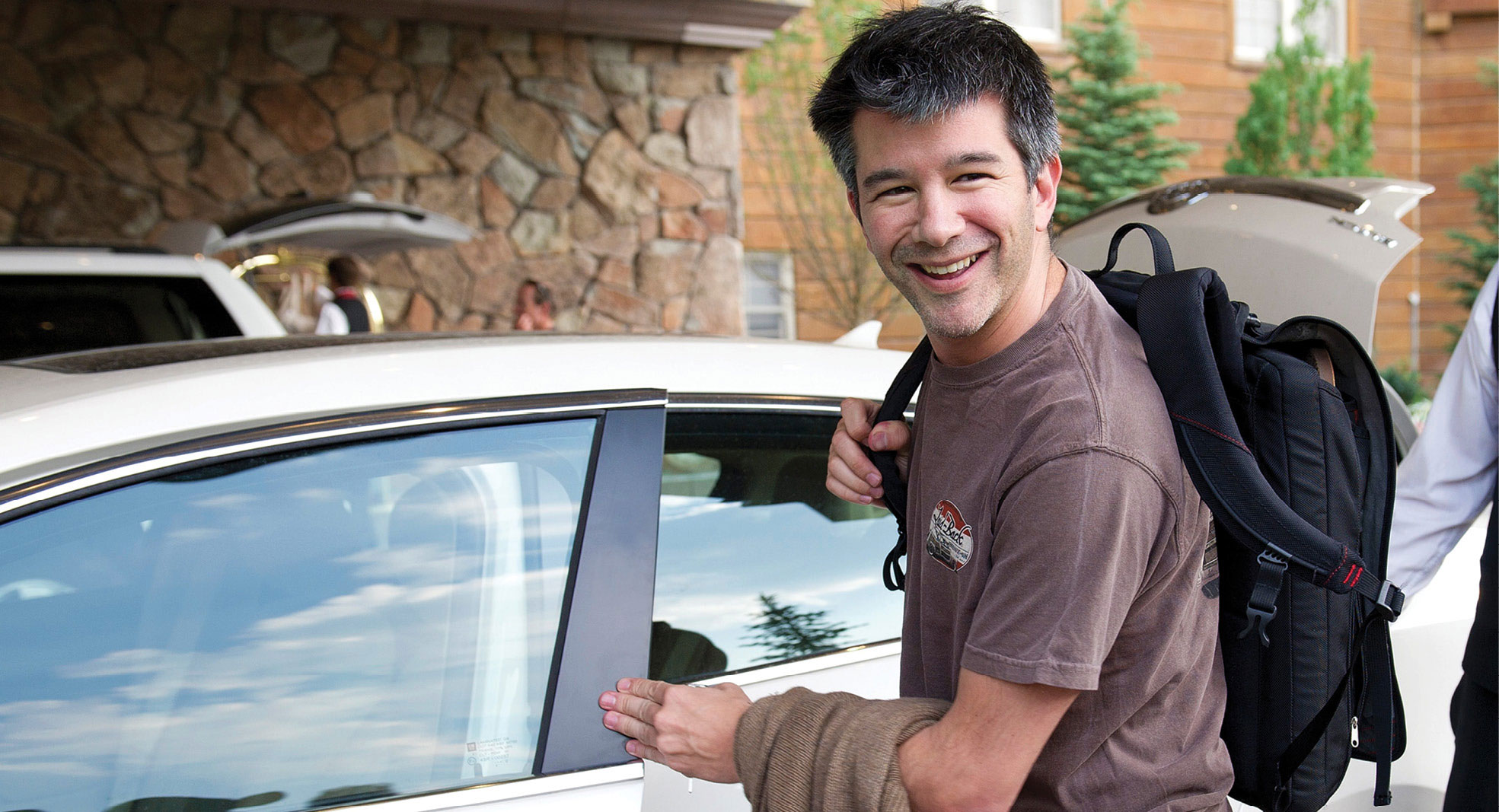
DAVID PAUL MORRIS/BLOOMBERG VIA GETTY IMAGES
The problem is that people from the taxi industry and the government bodies that control and often protect those operations don’t share Kalanick’s utopian vision. They’re not interested in making way for a new service that doesn’t own cars, doesn’t provide health care benefits to its drivers, and doesn’t abide by the complex and costly regulations that govern pick-ups at airports, hotels, and convention centers. When you pay $1 million for the privilege of owning a taxi permit, you’re not inclined to compete with a part-time chauffeur who enters the field with nothing but a cellphone and a mobile app.
In a 2013 white paper outlining Uber’s “principled approach” to expansion, Kalanick accused the taxi industry of operating an inefficient system against the public’s best interests, vowing to provide a safe alternative with $1 million worth of liability coverage for any mishaps, and drivers who have undergone background checks beyond “what any existing local regulatory body already has in place.”
These days, the CEO skillfully uses Twitter and Facebook to make his case, rallying Uber’s loyal customer base to pressure politicians into seeing things his way. At times, he will openly trade barbs with governors, mayors and other elected officials.
His arsenal for shaping public opinion also includes TV ads, celebrity endorsements, robocalls and petitions launched from Uber’s app. In San Antonio, the company halted operations for more than six months to protest a city council measure requiring car service drivers to submit to fingerprint background checks. In Washington, D.C., it called on users for support in halting a city transportation law that would have increased fees fivefold, unleashing 50,000 emails and 37,000 tweets.
That’s not to say efforts like those are foolproof. As of last summer, Uber was battling more than 70 federal lawsuits (on top of at least 60 that had already been resolved), according to the San Jose Mercury News. But Kalanick’s considerable war chest more than covered the legal bills. It also kept rival services such as Lyft and Sidecar (which was acquired by GM in December of 2015) at bay.
And so, as regulators and taxi industry reps resisted Uber’s advances, impounding cars, issuing cease-and-desist letters, and raising doubts about the safety of the company’s service, Kalanick could afford to turn up the heat. He took to describing the opposition as “Big Taxi” and the “taxi cartel.” At the Code Conference in 2014, he sat on stage in a red chair, legs crossed, hands resting on his lap, and said: “We have to bring out the truth about how dark and dangerous and evil the taxi side of things is.”
“We are running a political campaign and the candidate is Uber.”
—Vanity Fair, Nov. 2014
By 2014 Uber had developed a “playbook” to govern its rapid expansion. During one stretch that year, the company was launching service in a new city almost daily. Each advance started with a team of three people: one to recruit drivers, one to handle marketing efforts, and one to monitor the competition and negotiate with local authorities on the company’s behalf. The teams learned to be creative with outreach. At times, they used the Uber app to deliver ice cream cones, Valentine’s Day roses and kittens (for 15 minutes of cuddling). In Calgary, where authorities resisted the service, Uber offered free rides in return for a $5 donation to a local charitable foundation.
But Kalanick’s aggressive outlook might have led to some missteps by his lieutenants: Uber employees have been accused of ordering and canceling Lyft rides by the thousands to take rival cars out of circulation; sending mercenaries armed with company-issued credit cards and cellphones into city streets to try to recruit drivers from Lyft; threatening to sink a million dollars into opposition research that could be used to smear critics; and using the company’s map technology—known in the office as “God View”—to secretly track the movements of celebrities, politicians and ex-girlfriends.
Uber’s drivers have protested the company’s moves, too. As contractors, they are expected to pay for gas, repairs and auto insurance out of their own pockets. They’re broadly discouraged from accepting tips. And they must concede a full 20 percent or more of their earnings to headquarters.
Even Uber’s customers—a longstanding fountain of praise—began to express disappointment at the company’s bullish mindset, taking offense to the surge pricing used to keep vehicles in circulation at all times of the day and night. When fares skyrocketed on New Year’s Eve, people took to social media to voice their disapproval. When the fares spiked during times of crisis—a hostage situation in Sydney, Australia, and a bombing in Manhattan’s Chelsea neighborhood—they howled in outrage.
The bad press weighed on Kalanick, forcing him to rethink his approach. It wasn’t enough to simply fight the transportation industry, he decided. He had to convince people that Uber was a force for good.
He started by hiring a political strategist. Not just any strategist, but David Plouffe, the man who orchestrated Barack Obama’s run to the White House in 2008. In the months that followed, Uber started launching programs to turn military vets into drivers and others to enlist drivers in the nation’s Amber Alert efforts. It also tapped Princeton University economist Alan Krueger for a study on Uber’s impact on job creation. In a masterstroke, Plouffe appeared on MSNBC’s Morning Joe two days after Obama’s 2015 State of the Union address to discuss the results.
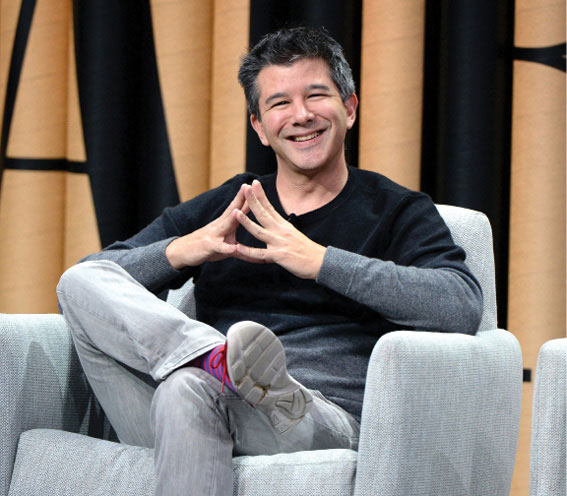
MARLENE AWAAD/BLOOMBERG VIA GETTY IMAGES
Kalanick has begrudgingly learned to accept that he is no longer the scrappy underdog. As much as he identifies with being David, the world at large can’t help but view him as a global Goliath. One that employs more than 160 lobbyists. When he goes out stumping now, he arms himself with cold hard facts instead of the language of rebellion.
A year ago, he stepped onstage in Vancouver to deliver a TED Talk. He passed up the baller suit he often wears for a pair of jeans and a gray V-neck sweater. In a humble tone reminiscent of Al Gore, he laid out his argument for a world with fewer cars, driving home each point in his slide show with a clever photo or a startling number.
“With the technology in our pockets today, and a little smart regulation,” he said, “we can turn every car into a shared car, and we can reclaim our cities.”
“Once you can deliver cars in five minutes, there’s a lot you can deliver in five minutes.”
—Dreamforce Conference, Sept. 2015
In his talks to budding entrepreneurs, Kalanick likes to say that the innovators’ playground lies in the gap between perception and reality. And these days, he’s set his sights on upending the conventional wisdom that owning an automobile is a worthy pursuit.
The reality, he argues, is that your car sits idle for 96 percent of the time—often in one of the vast tracts of urban real estate devoted solely to accommodating parked vehicles. “We even have skyscrapers built for cars,” he told the TED audience. “That’s the world we live in today.”
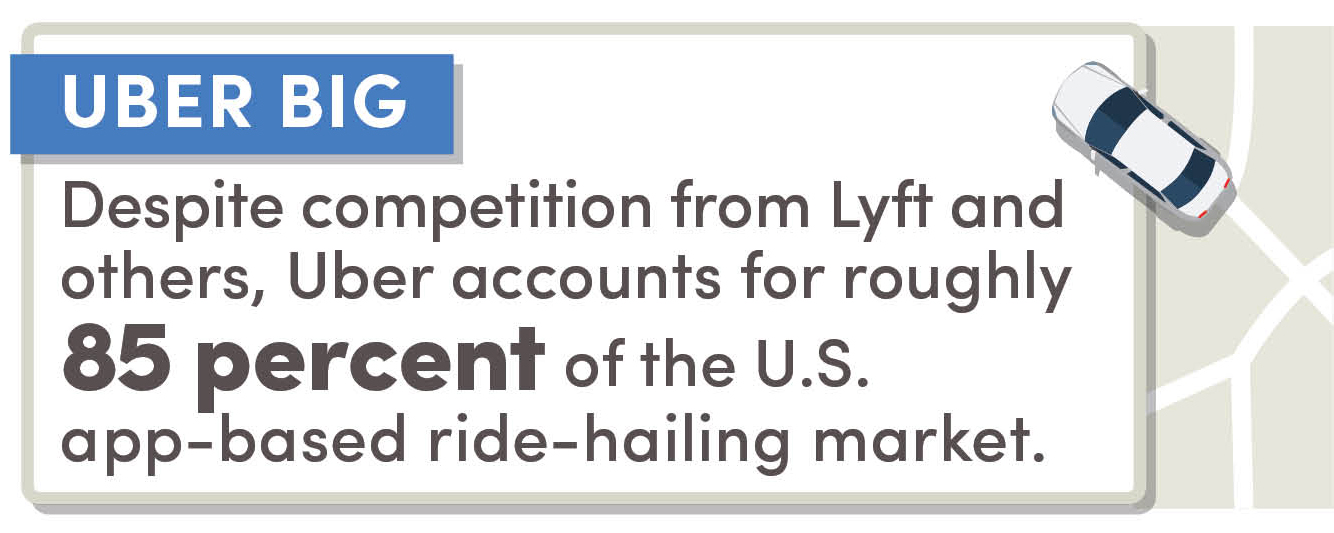
In the future that Kalanick envisions, Uber will use its logistics acumen to transport much more than people. With UberEATS, it’s already delivering meals. With UberRUSH, it’s adding groceries and other goods to the mix. The company has even experimented with providing helicopter service to wealthy Manhattanites bound for summer retreats in the Hamptons.
In pursuit of ever greater efficiencies, Kalanick has invested heavily in self-driving car technology—to the consternation of his independent drivers. In 2015 he launched an Advanced Technologies Center in a Pittsburgh chocolate factory, luring away 40 researchers from the famed robotics center at nearby Carnegie Mellon University with huge salary increases and bonuses.
Last year he acquired the self-driving truck startup Otto for a reported $680 million and the artificial intelligence firm Geometric Intelligence for an undisclosed sum. In the time between those two purchases, David Drummond, senior vice president of corporate development at Google’s parent company, Alphabet, resigned from Uber’s board of directors, citing the increasing conflicts between the two companies.
In mid-December, Uber unveiled its self-driving cars in San Francisco—where the business had launched six years earlier. It started picking up passengers in a sensor-laden Volvo SUV. The car had a driver and a test engineer seated in the front just to be safe. But when one of Uber’s 16 vehicles was videotaped running a red light, the California Department of Motor Vehicles ordered the company to halt the tests because it had failed to apply for the required testing permit.
In true Kalanick fashion, Uber refused to give in. The wheels kept rolling. But a week later, the state revoked the cars’ registration and Uber conceded, loading them onto a truck and hauling them to Arizona. Months earlier Kalanick had made an even larger concession in China—a prize he once coveted for its many major population centers. After years of dueling rival Didi Chuxing for supremacy, he agreed to close up shop in return for a $1 billion equity investment and a 17.7 percent stake in his adversary. Up to that point, Uber had been losing $200 million a month in the turf war.
Does this mean the CEO has lost his nerve? That would be a first. Does he have another play in mind? Only time will tell, and Kalanick has always been a step ahead.
Related: I Drove for Uber to See How Strangers Can Impact My Life
This article originally appeared in the March 2017 issue of SUCCESS magazine.




